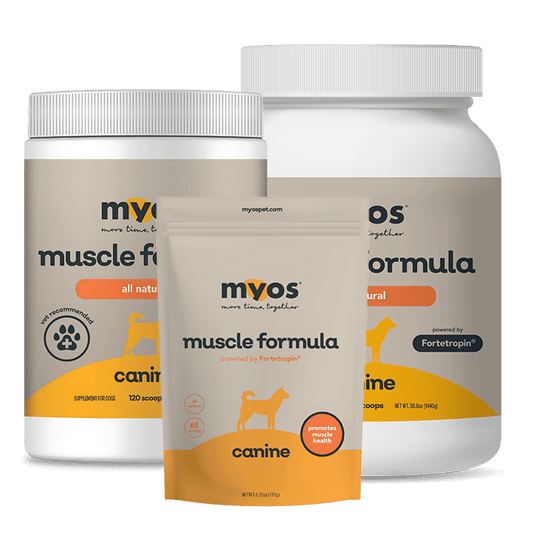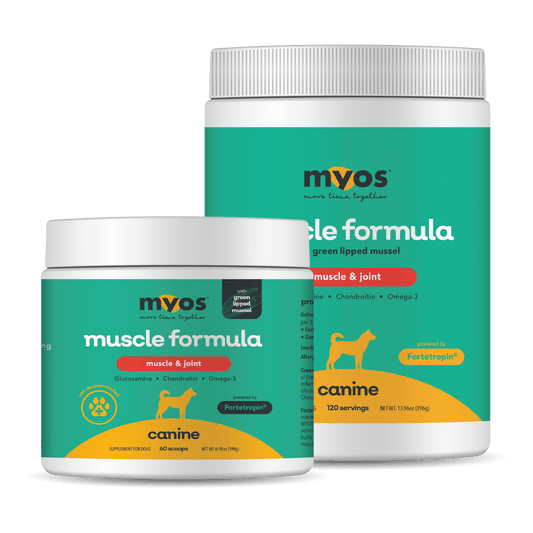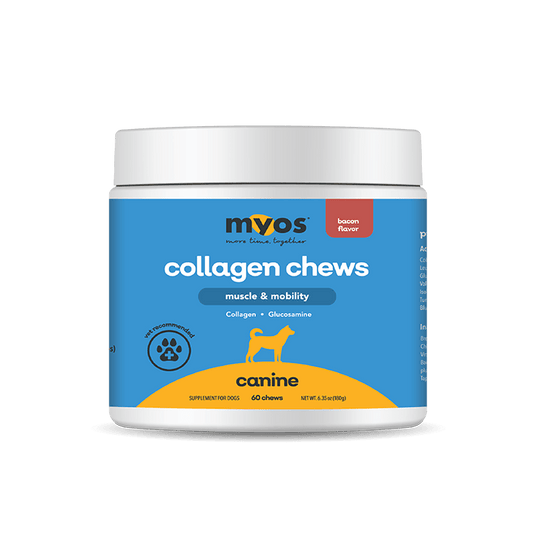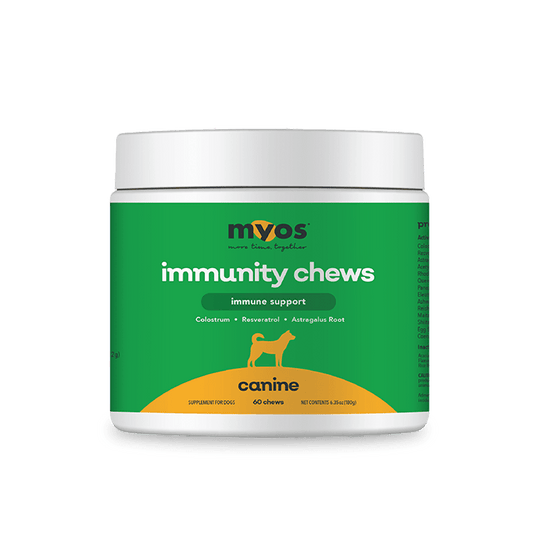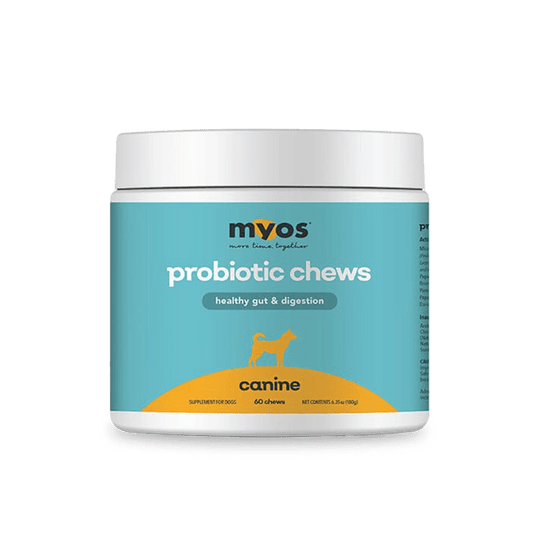By Neerav D. Padliya, Ph.D.
Background: Sarcopenia and Frailty
Frailty is commonly defined as a geriatric syndrome that is associated with age-related declines in physiologic reserve and function spanning multiple organ systems that leads to enhanced susceptibility to adverse health outcomes [1]. Age-related muscle loss known as sarcopenia is a major cause of frailty, according to Morley et al [2]. Multiple human clinical trials in men [3] and women [4] have shown that sarcopenia is associated with elevated mortality risk. Sarcopenia and frailty are major health problems faced by geriatric dogs and cats and have been reviewed by Freeman [5,6].
Defining the Frailty Related Phenotype (FRP)
In the field of Human Gerontology, this phenotype of frailty for humans is based on 5 components [7]:
- Chronic Undernutrition (assessed by unintentional weight loss)
- Exhaustion (self-reported)
- Low Physical Activity Level (measured through a weighted score of number of kilocalories expended per week)
- Poor Mobility (assessed as time to walk a distance of 15 feet)
- Weakness (grip strength)
In a paper published by Researchers at École Nationale Vétérinaire d'Alfort (ENVA), France the Frailty-Related Phenotype was adapted for dogs and defined by the following 5 components [8]:
- Chronic Undernutrition (body condition, appetite, hair quality and density)
- Exhaustion (effort tolerance, i.e. good tolerance vs. fatigability vs. breathlessness)
- Low Physical Activity Level (perceived activity level)
- Poor Mobility (gait, joint pain)
- Weakness (muscle mass, i.e. normal, moderate muscle wasting, cachexia)
Assessing the Impact of FRP on Mortality Risk in Dogs
In order to assess the impact of the FRP on mortality risk in dogs, Dr. Hua, a Veterinarian at ENVA, France designed a clinical study to gauge how the degree of FRP (as defined above) impacts survival in dogs [7]. Specifically, Dr. Hua was most interested in comparing dogs with 0 or 1 FRP components with dogs that exhibited ≥2 FRP components at the time of their Clinical Geriatric Assessment (CGA).
To assess the impact of FRP components on mortality risk, 116 aged, neutered dogs (58 males, 58 females) from the Parisian School of Guide Dogs For Blind or Visually Impaired People were studied. These dogs were 1) Golden Retrievers, 2) Labrador Retriever and 3) Golden Retriever-Labrador Retriever Crossbreeds.
In Figure 1, a Kaplan-Meier plot is shown taken directly from [8]. In this plot, dogs with 0 or 1 FRP components at the time of their CGA are represented with a solid line while dogs exhibiting ≥2 FRP components are represented with a dashed line. It is clear from Figure 1 that dogs with ≥2 FRP components at the time of their CGA had significantly reduced survival when compared with dogs with 0 or 1 FRP components.
Figure 1: Kaplan-Meier estimates of time to death after a CGA among 116 aged neutered guide dogs (born between January 1, 1995, and December 31, 2002) according to the number of components of an FRP (≥ 2 [dashed line] vs none or1 [solid line]) determined at the time of the CGA.
Reproduced from Figure 1 of reference [8].

Fortetropin®: Advanced Nutrition to Address Muscle Loss in Dogs
Fortetropin® is an advanced nutrition product made from fertilized chicken egg yolk using a patented, low temperature manufacturing process [9,10] that helps to better retain the natural bioactivity of the proteins, peptides and lipids that are found to be present within fertilized, chicken egg yolk. In human clinical studies, Fortetropin® has been shown to increase the rate of muscle protein synthesis [11] and lead to gains in muscle mass and strength [12].
In a randomized, double blind, placebo-controlled study involving 100 dogs recovering from TPLO surgery conducted at Kansas State University, daily consumption of Fortetropin® led to reduced muscle atrophy and improved recovery in dogs [13]. Given that muscle loss is a major cause of frailty, Fortetropin® may offer exciting potential for frail dogs.
Learn more about how Fortetropin® can make a difference for aging dogs at www.myospet.com.
References
- Chen, Xujiao, Genxiang Mao, and Sean X. Leng. "Frailty syndrome: an overview." Clinical interventions in aging9 (2014): 433.
- Morley, John E., Stefan D. Anker, and Stephan von Haehling. "Prevalence, incidence, and clinical impact of sarcopenia: facts, numbers, and epidemiology—update 2014." (2014): 253-259.
- Ruiz, Jonatan R., et al. "Association between muscular strength and mortality in men: prospective cohort study." Bmj337 (2008): a439.
- Caan, Bette J., et al. "Association of muscle and adiposity measured by computed tomography with survival in patients with nonmetastatic breast cancer." JAMA oncology6 (2018): 798-804.
- Freeman, L. M. "Cachexia and sarcopenia: emerging syndromes of importance in dogs and cats." Journal of veterinary internal medicine1 (2012): 3-17.
- Freeman, Lisa M. "Cachexia and Sarcopenia in Companion Animals: An Under‐Utilized Natural Animal Model of Human Disease." JCSM Rapid Communications2 (2018): 1-17.
- Fried, Linda P., et al. "Frailty in older adults: evidence for a phenotype." The Journals of Gerontology Series A: Biological Sciences and Medical Sciences3 (2001): M146-M157.
- Hua, Julie, et al. "Assessment of frailty in aged dogs." American journal of veterinary research12 (2016): 1357-1365.
- Buxmann, Waldermar, et al. “Process for producing a composition for increasing muscle mass.” S. Patent # 10,165,785, Issue Date: January 1, 2019.
- Buxmann, Waldermar, et al. “Process for producing a composition containing active follistatin.” S. Patent #8,815,320, Issue Date: August 26, 2014.
- Evans, William J., et al. “Effects of Fortetropin® on the rate of muscle protein synthesis in older men and women: a randomized, double blinded, placebo-controlled study.” Gerontol Med Sci, submitted.
- Sharp, Matthew H., et al. "The effects of fortetropin supplementation on body composition, strength, and power in humans and mechanism of action in a rodent model." Journal of the American College of Nutrition8 (2016): 679-691.
- White, Dana, et al. “Fortetropin® inhibits disuse muscle atrophy in dogs after tibial plateau leveling osteotomy.” PLoS One, revision submitted.

